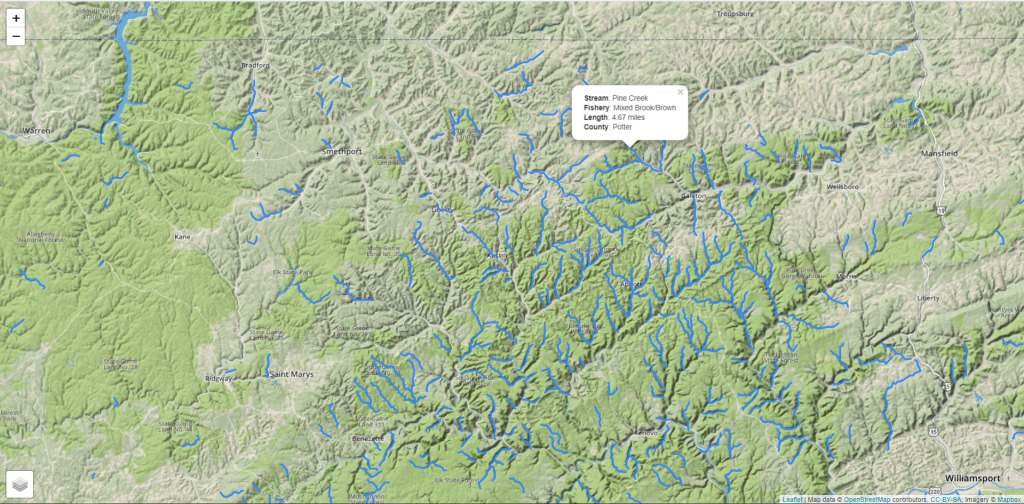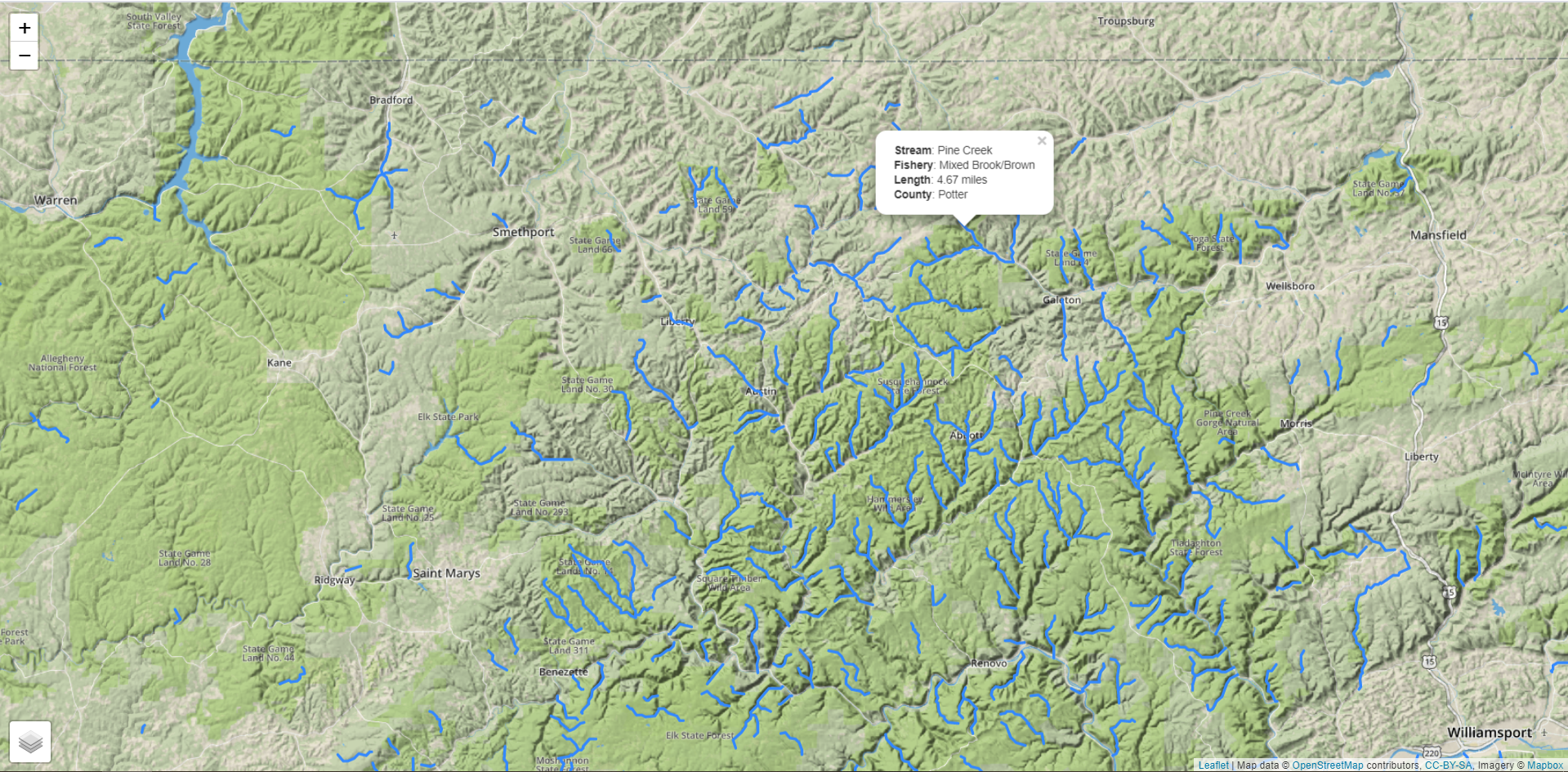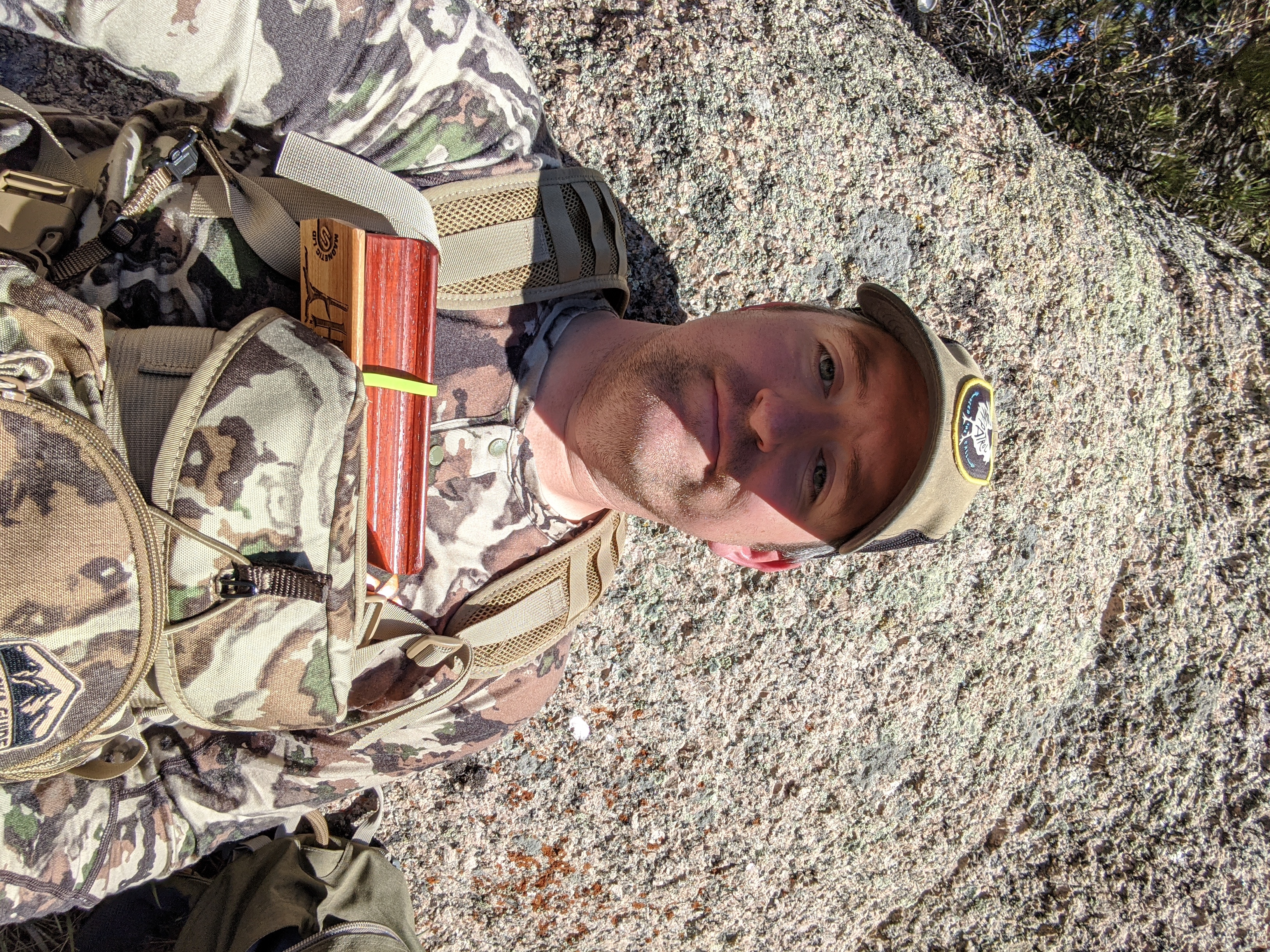A Class of their Own
Pennsylvania trout anglers flock to the water each April as trout season opens, and waters have been stocked with Rainbow, Palomino, Brook, and Brown trout. But did you know that there is another classification of waters where trout still naturally reproduce and you can have a dink on the line that fights like a whale? Pennsylvania has numerous waters classified as Class A Natural Reproduction Trout Waters. There’s a surprising amount of them, but without a map you may never find them. These are skinny waters off the beaten path and not easily found.
We put together a map (View the map here) of these sacred waters where brookies and browns are still a native fishery in the Keystone state.

Note: It’s important to note that many of the Class A Trout Streams in Pennsylvania run through private property. It’s your duty as the angler to get permission to fish private property. Stream Access laws are in a state of constant flux. Check out the Pennsylvania Fish and Boat Commission website for more details.
Class A Designation
Class A Wild Trout Waters is the highest classification of trout waters within the Commonwealth of Pennsylvania. These waters are crown jewels in the crown of the Keystone State and are considered to have the highest quality naturally reproducing trout. Since 1983 some waters have been designated as Class A Wild Trout Waters by nomination, and to date over 1500 miles of streams have been protected.
Class A Waters come with some legal protections with the Pennsylvania Department of Environmenal Protection providing guidance, and PAFBC treating the fisheries as renewable resources (58 Pa. Code §57.8a,). Entities are held to stricter requirements for runoff and discharge into Class A trout streams than they would otherwise.
In order to be designated as a Class A Wild Trout Stream the water needs to meet some criteria:
- For Brook Trout contain a biomass of 30 kilograms per hectare (27 lb/acre).
- Brook Trout must not make up less than 75% of total wild trout biomass.
- At least 0.1 kilograms per hectare (0.089 lb/acre) of Brook Trout less than 15 centimeters (5.9 in) long.
- For Brown Trout rules are the same but the biomass requirement is 40 kilograms per hectare (36 lb/acre).
- For both species of trout combined, neither can make up more than 75% of biomass and the 0.1 kilograms per hectare of small trout requirement remains.
- There are criteria for Rainbow trout as well, but they are not native fish. One stream has a Class A wild designation with both Rainbows and Brookies and that’s Roaring Run in Wyoming County.
- Class A Streams are to receive no stocking.
- Class A designation can be removed if the stream fails to meet the biomass quotas for two consecutive observation periods.
Map Features
Just briefly I want to touch on some of the features of the PA Class A Trout Stream Map.
- The map utilizes the latest 2020 Class A Trout Stream designations courtesy of map data found at the PA Spatial Data Access site.
- Map is mobile friendly but really shines on the desktop. We’re working on getting some more mobile tweaks into place.
- Search for stream name and it will auto move the map to the stream of your choice.
- Multiple layers allow multiple views of the same area. Select using the layer icon on the bottom right.
- State Game Lands and the Allegheny National Forest have been added for easy identification of public land fishing opportunities. They’re shown in green.
Something broken? Want additional features? Hit us up on social media and we’ll take a look!
Other Resources
Check out the PA Wilds Fishing brochure here (PDF), many of Pennsylvania’s popular fishing destinations are within the Pennsylvania Wilds.






Good morning I have tried numerous times to catch at least one trout this year and I haven’t gotten one yet and I wish I knew what I was doing wrong. I live in lock Haven Pennsylvania. Any tips would be appreciated thank you
Ralph,
Are you a fly angler or a spinfisher? I usually have luck as the water warms in PA with Mepps Black Fury or a small Comet minnow. They’ll begin to feed more aggressively as the summer goes on, but feed most in the morning and in the evening. Mid day is usually a lull. If I’m hucking bait I have the most luck on red worms or mealworms with a relatively small hook. You may be getting into pressured fish based on where you are, so go early or stay late in your spots for the best luck.